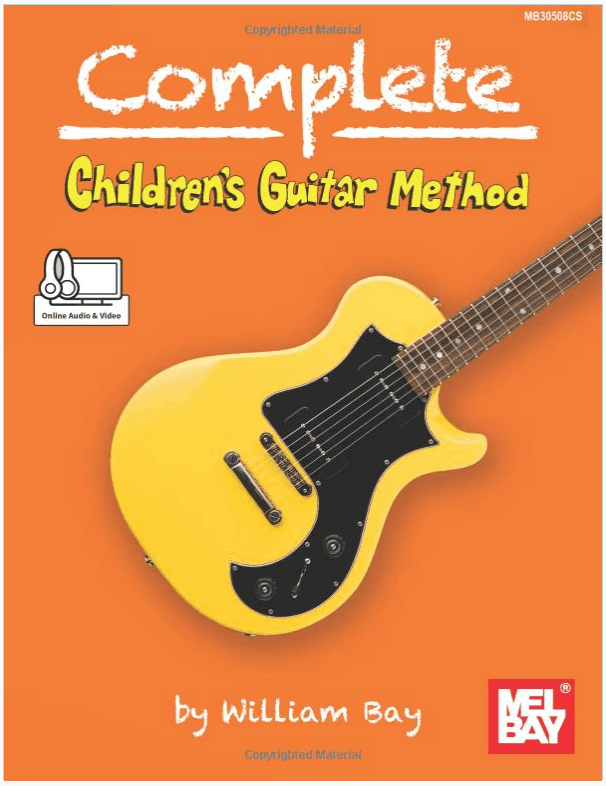It’s a wonderful thing to teach guitar to kids. Kids have the advantage of a malleable mind ready to mold! They learn much quicker than adults, and learning an instrument early on does wonders for their disposition later in life. But teaching kids is much different than teaching adults. You have to take a much different approach.
When teaching children to play guitar, you have to be aware of their attention span, finger and hand size, and the strength limitations of their hands. You also need to tailor your lessons to the specific child.
If you’ve been thinking about getting your child guitar lessons, read this first!
There are few things you’ll want to be aware of, and a few things your child will need.
Reasons to Make Guitar A Family Event
I could go on and on about how important creativity and music is for the development of a child’s brain and cognitive abilities. And how it produces self confidence and expression, increases their focus and attention span, and reduces stress. There are some other compelling benefits to consider too.
The most obvious might be that it pulls them away from one of the many rectangular screens. When I was a young and learning guitar, I would spend hours playing. Locking myself in my bedroom playing along to records, or hanging out with my friends playing guitar, I would spend a lot of time with the guitar in my hands.
These days that’s a little harder to do. We’re in a world full of time wasting distractions. Guitar is a great way to unplug and focus on something tangible for a few minutes every day. Guitars are extremely portable and easy to take around town and on trips.
Compared to other instruments, guitars are pretty cheap too. A good quality guitar starts around $150. This guitar, if taken care of, will last years and years. Compared to a piano, saxophone, or violin, that’s a steal!
Lastly, music is a great way to teach your child to interact with other people. It’s wonderful to have family music night (which is a good reason to learn the guitar together!). That’s a great way to bond as a family.
Guitar is also a great ice breaker for social situations. I’ve met so many people through guitar. Even if someone’s just wearing a guitar shirt, that’s turned into conversations. In a world that’s progressively impersonal, these interpersonal skills are imperative.
3 Ways to Teach Your Kids Guitar

Children and adults learn things differently. So it’s important to make sure their lessons are tailored to them and their age group. Here are a few ways to do this.
#1 - Learn Guitar And Tailor The Lessons To Your Kid
If you don’t already play guitar, now is a great time to learn. Learning guitar together and sharing that experience will create a deeper bond. You’ll want to simplify the things you learn. For example, instead of teaching them the full C or G chords, teach them the one finger versions.
There are a ton of lesson books for kids and I’ll make some recommendations later in the article.
#2 Find Online Lessons Centered Around Kids
Online courses are very convenient and allow your child to work at their own pace. You’ll want to be picky about the course you choose. Any lesson plan should be aimed specifically at teaching kids, and an encouraging course to prevent discouragement.
You should be prepared to help your child understand some of the lessons. This also serves to monitor what they’re learning so you can see if it’s effective or not.
#3 Find A One On One Instructor With Experience Teaching Kids
One on one lessons are a great way to get real time feedback. There is likely a qualified instructor in your area, and there are live Skype style options online too. Just like the previous point, make sure they have a long history of teaching kids specifically.
Most of the time they’ll let you sit in on a lesson or two so you can get a sense of their style. Every kid is different, and a quality instructor can adjust the lessons to the individual.
Considerations When Teaching Kids
Kids typically have shorter attention spans than adults, so lessons shouldn’t be longer than 30 minutes. This shouldn’t be a problem though. The lessons are to teach the techniques, the real work happens at home throughout the week.
Kids will have some physical limitations to learning guitar as well. These can be worked around. But learning the guitar might take a little longer compared to teens and adults.
Their fingers and hands are smaller than guitars are designed for. Making full chords will be tricky at first. But it gets easier the more they practice and build flexibility in their hands.
In addition to the stretch, they’ll also need to build finger strength. This is something every guitar player goes through, but it’ll be more of a journey for younger (or smaller) kids.
That’s not to say it’s a show stopper. Just search for “kid shreds on guitar” on YouTube to see what kids are actually capable of!
Best Guitar for a Child
You have a couple different schools of thought here. Most people will gravitate towards getting their child a 1/2 or 3/4 size guitar. They’re a standard size guitar that’s proportionally shrunk down. These are especially good for smaller children. Just don’t be surprised when they outgrow it and need a new one (just like shoes).
In addition to the size you’ll have the choice of nylon string and steel string guitars. They both serve different musical purposes, so there isn’t one that’s better than the other.
Nylon String Guitars
Nylon string guitars are traditionally used for Classical and Flamenco styles of music. However, when a child is first learning guitar they’ll benefit from the softer strings. Nylon strings are much gentler on your fingers. They’ll develop calluses slower and over a longer period of time. This can be helpful in keeping their motivation high.
A downside is the necks are typically wider which will make them harder (but not impossible) to play. Finding a 1/2 size or 3/4 size nylon string guitar is a little harder.
Steel String Guitars
Steel string guitars are what they’ll likely end up playing after enough time. I personally have both nylon string and steel string guitars. They serve different purposes and offer different tonal options.
The necks will be much more manageable and approachable for their smaller hands. The drawback is that the strings are rougher on their fingers, and are harder to play. I see these as positives. You need to develop calluses and the tension will build your hand and finger muscles quicker. But it can also be discouraging since it does make it harder at first.
An alternative option is to use SIlk And Steel strings on a steel string acoustic. These are designed for steel string acoustics, but are somewhere in between steel strings and nylon strings as far as feel and sound goes.
Guitar Books for Kids

Guitar books that are designed for children can provide good examples of how to make guitar accessible for them. If you decide to teach your kid guitar, you can use this to design your own program based on the age of your child and what makes sense to you.
Here’s a short list of good books readily available on Amazon (or your local music store). This isn’t a complete list by any means. But these are tried and true books that have been used for years and years. Really anything by Mel Bay or Alfred’s is an excellent option.
- Alfred's Teach Your Child to Play Guitar, Bk 1
- Alfred's Kid's Guitar Course, Bk 1
- My First Guitar: Learn To Play: Kids
- Complete Children's Guitar Method (Mel Bay)
Guitar Teaching Tips & Big Opportunities
Here are some tips that will go a long way to making this time between you and your child a rewarding and successful experience.
Make a consistent time to hold the “guitar sessions”. You don’t have to be very rigid about it, but consistency and structure will yield better results. The more results they get, the more zeal they’ll have towards learning. This also teaches them valuable lessons about discipline and hard work.
Use this time to impart your values and show your child who you are. This is a giant opportunity. Teach patience by being patient. Teach persistence by (gently but persistently) encouraging your child to keep at it. Teach focus by giving your child distraction-free-attention for the time they spend on guitar.
I still cherish the few times my father took the time to teach me something that he valued. Likely inspired by that experience I taught my oldest daughter guitar. To this day we have a bond that I believe partly comes from that experience.
You have an opportunity here to make a significant difference. Use it wisely.
